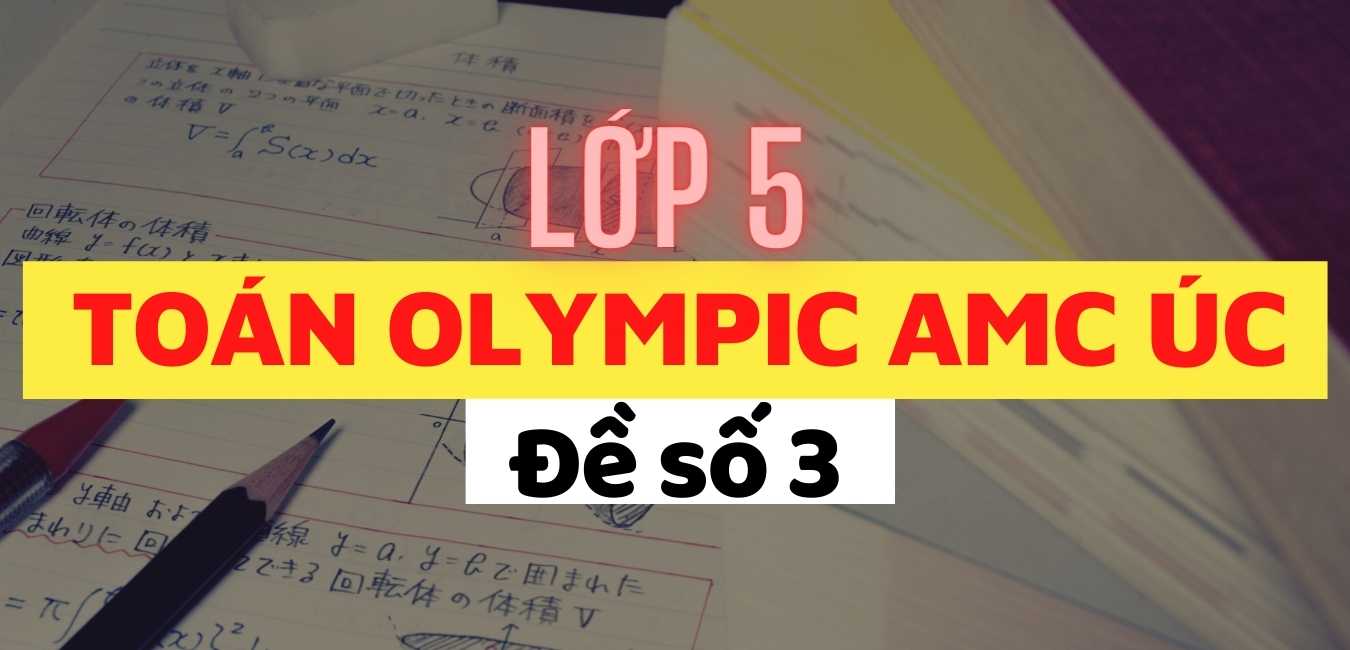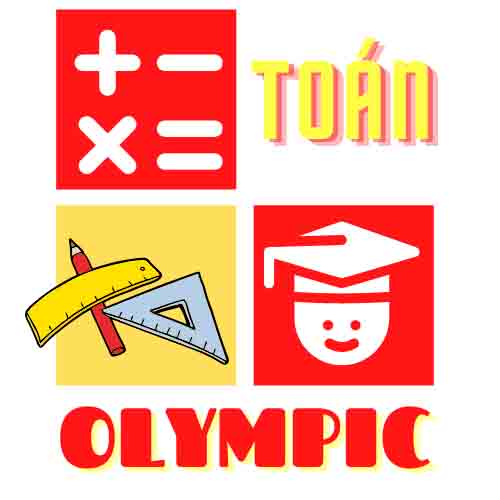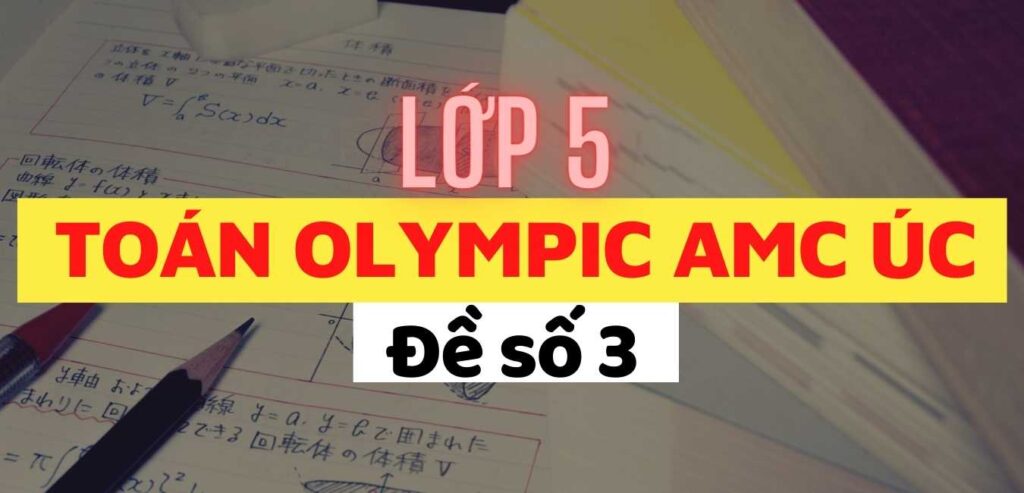Hôm nay thầy sẽ gửi tới các em bộ Đề thi Toán AMC Úc lớp 5 – đề số 3 giúp các em tự luyện tại nhà, hãy cố gắng làm bài hết sức có thể xem khả năng của mình đến đâu. Để giúp các em nâng cao trình độ, kỹ năng và để có thể giành được kết quả cao trong các kỳ thi Olympic thì điều cơ bản nhất đó là các em phải luyện tập làm các bài ôn luyện, các đề thi tương xứng với những cuộc thi đó, nếu có sự kèm cặp, giảng dạy của giáo viên theo cùng thì càng tốt. Vì là cuộc thi Toán Olympic quốc tế nên toàn bộ câu hỏi đều bằng tiếng Anh, các em chú ý đọc cẩn thận đề bài nhé, nào bây giờ chúng ta cùng bắt đầu vào đề thi thôi.
HUY CHƯƠNG TOÁN OLYMPIC QUỐC TẾ
Xem qua một vài Huy Chương Toán Olympic Quốc Tế của các em học sinh toanolympictieuhoc.com đạt được. Các thành tích, kết quả mà các thầy cô và học trò nỗ lực phấn đấu hiện nay không ngừng gia tăng. Tôn chỉ của các thầy cô giáo là mang lại chất lượng đào tạo cao nhất cho học sinh theo học tại các lớp của Toán Olympic Tiểu Học & Toán Nâng Cao Tiểu Học.


30 câu hỏi Đề thi Olympic Toán AMC Úc lớp 5 bộ đề số 3
1) 2 − (0 − (2 − 0)) =
(A) −4
(B) −2
(C) 0
(D) 2
(E) 4
2) 1000% of 2 is equal to
(A) 0.002
(B) 20
(C) 200
(D) 1002
(E) 2000
3) In the diagram provided, find the sum of x and y.

(A) 30
(B) 75
(C) 95
(D) 105
(E) 180
4) frac{mathrm{1+2+3+4+5} }{mathrm{1+2+3+4}} – frac{mathrm{1+2} }{mathrm{1+2+3}} =
(A) 3
(B) frac{mathrm{5} }{mathrm{6}}
(C) 1
(D) frac{mathrm{7} }{mathrm{6}}
(E) 2
5) Sebastien is thinking of two numbers whose sum is 26 and whose difference is 14. The product of Sebastien’s two numbers is
(A) 80
(B) 96
(C) 105
(D) 120
(E) 132
6) Which of the shapes in the diagram have equal area ?

(A) All of the shapes have equal area.
(B) Only Q and S have equal area.
(C) Only R and T have equal area.
(D) Only P, R and T have equal area.
(E) P, R and T have equal area, and Q and S have equal area.
7) 123456 − 12345 + 1234 − 123 + 12 −1 =
(A) 33333
(B) 101010
(C) 111111
(D) 122223
(E) 112233
8) If frac{mathrm{4} }{mathrm{5}} of frac{mathrm{5} }{mathrm{6}} of frac{mathrm{*} }{mathrm{7}} of frac{mathrm{7} }{mathrm{8}} is equal to 1, then the value of * is
(A) 6
(B) 8
(C) 10
(D) 12
(E) 14
9) A piece of paper is folded twice as shown and cut along the dotted lines.

Once unfolded, which letter does the piece of paper most resemble ?
(A) M
(B) O
(C) N
(D) B
(E) V
10) An equilateral triangle is subdivided into a number of smaller equilateral triangles, as shown. The shaded triangle has side length 2. What is the perimeter of the large triangle ?

(A) 24
(B) 27
(C) 30
(D) 33
(E) 36
11) Triangle XY S is enclosed by rectangle PQRS as shown in the diagram. In square centimetres, what is the area of triangle XY S ?

(A) 82
(B) 88
(C) 94
(D) 112
(E) 130
12) Let X = 1 – frac{mathrm{1} }{mathrm{3}} + frac{mathrm{1} }{mathrm{5}} – frac{mathrm{1} }{mathrm{7}} + frac{mathrm{1} }{mathrm{9}} – frac{mathrm{1} }{mathrm{11}} and Y = 1 – frac{mathrm{1} }{mathrm{3}} + frac{mathrm{1} }{mathrm{5}} – frac{mathrm{1} }{mathrm{7}} . Then X – Y is equal to
(A) frac{mathrm{2} }{mathrm{99}}
(B) frac{mathrm{1} }{mathrm{11}}
(C) frac{mathrm{1} }{mathrm{10}}
(D) frac{mathrm{1} }{mathrm{2}}
(E) frac{mathrm{2} }{mathrm{9}}
13) The number 25 can be written as the sum of three different primes less than 20. For instance, 25 = 5 + 7 + 13.
How many multiples of 10 can be written as the sum of three different primes less than 20 ?
(A) 1
(B) 2
(C) 3
(D) 4
(E) 5
14) In this circle with centre O, four triangles are drawn, with angles as shown. What is the value of x ?

(A) 10
(B) 15
(C) 18
(D) 24
(E) 36
15) There are 10 children in a classroom. The ratio of boys to girls increases when another girl and another boy enter the room. What is the greatest number of boys that could have been in the room at the beginning ?
(A) 1
(B) 4
(C) 5
(D) 6
(E) 9
16) Two triangles, A and B, have the same area. Triangle A is isosceles and triangle B is right-angled.

The difference between the perimeters of triangle A and triangle B is
(A) nothing
(B) between 0 cm and 1 cm
(C) between 1 cm and 2 cm
(D) between 2 cm and 3 cm
(E) more than 3 cm
17) A list of numbers has first term 2 and second term 5. The third term, and each term after this, is found by multiplying the two preceding terms together : 2, 5, 10, 50, 500, . . .
The value of the eighth term is
(A) 2^5 times 5^8
(B) 2^8 times 5^9
(C) 2^8 times 5^{13}
(D) 2^9 times 5^{15}
(E) 2^{13} times 5^{21}
18) Two sides of a regular hexagon are extended to create a small triangle. Inside this triangle, a smaller regular hexagon is drawn, as shown. In area, how many times bigger is the larger hexagon than the smaller hexagon ?

(A) 4
(B) 6
(C) 8
(D) 9
(E) 12
19) The number frac{mathrm{1 times 2 times 3times 4 times 5 times 6 times 7 times 8 times 9 times 10} }{mathrm{n}} is a perfect square.
What is the smallest possible value of n ?
(A) 7
(B) 14
(C) 21
(D) 35
(E) 70
20) In the triangle ABC shown, D is the midpoint of AC, E is the midpoint of BD and F is the midpoint of AE. If the area of triangle BEF is 5, what is the area of triangle ABC ?

(A) 30
(B) 35
(C) 40
(D) 45
(E) 50
21) A scientist measured the amount of bacteria in a Petri dish over several weeks and also recorded the temperature and humidity for the same time period. The results are summarised in the following graphs.
During which week was the bacteria population highest ?

(A) week A
(B) week B
(C) week C
(D) week D
(E) week E
22) Five friends read a total of 40 books between them over the holidays. Everyone read at least one book but no one read the same book as anyone else. Asilata read twice as many books as Eammon. Dane read twice as many as Bettina. Collette read as many as Dane and Eammon put together. Who read exactly eight books ?
(A) Asilata
(B) Bettina
(C) Colette
(D) Dane
(E) Eammon
23) There are 5 sticks of length 2 cm, 3 cm, 4 cm, 5 cm and 8 cm. Three sticks are chosen randomly. What is the probability that a triangle can be formed with the chosen sticks ?
(A) 0.25
(B) 0.3
(C) 0.4
(D) 0.5
(E) 0.6
24) Five squares of unit area are circumscribed by a circle as shown. What is the radius of the circle ?
(A) frac{mathrm{3} }{mathrm{2}}
(B) frac{mathrm{2sqrt{5}} }{mathrm{3}}
(C) frac{mathrm{sqrt{10}} }{mathrm{2}}
(D) frac{mathrm{sqrt{13}} }{mathrm{2}}
(E) frac{mathrm{sqrt{185}} }{mathrm{8}}
25) Alex writes down the value of the following sum, where the final term is the number consisting of 2020 consecutive nines :

How many times does the digit 1 appear in the answer?
(A) 0
(B) 2016
(C) 2018
(D) 2020
(E) 2021
26) If n is a positive integer, n! is found by multiplying the integers from 1 to n. For example, 4! = 4 × 3 × 2 × 1 = 24.
What are the three rightmost digits of the sum 1! + 2! + 3! + · · · + 2020! ?
27) A square of side length 10 cm is sitting on a line. Point P is the corner of the square which starts at the bottom left, as shown. Without slipping, the square is rolled along the line in a clockwise direction until P returns to the line for the first time. To the nearest square centimetre, what is the area under the curve traced by P ?

28) Eight identical right-angled triangles with side lengths 30 cm, 40 cm and 50 cm are arranged as shown. The inner four triangles are made to overlap each other, but the outer four triangles do not overlap any of the others. What is the area, in square centimetres, of the unshaded centre square ?

29) My grandson makes wall hangings by stitching together 16 square patches of fabric into a 4 × 4 grid. I asked him to use patches of red, blue, green and yellow, but to ensure that no patch touches another of the same colour, not even diagonally. The picture shows an attempt which fails only because two yellow patches touch diagonally. In how many different ways can my grandson choose to arrange the coloured patches correctly ?

30) A clockmaker makes a 12-hour clock but with the hour and minute hands identical. An ambiguous time on this clock is one where you cannot tell what time it is, since the exact position of the two hands occurs twice in a 12-hour cycle. For instance, the clock shown can be seen at approximately 7.23pm and 4.37pm so both of these times are ambiguous. However, 12.00pm is not ambiguous, since both hands are together.
How many ambiguous times happen in the 12 hours from midday to midnight?

* * *
Như vậy là thầy đã gửi tới các em 30 câu hỏi của Đề thi Olympic Toán AMC Úc lớp 5 – đề số 3 để các em tự luyện, ngoài ra các em còn có thể tham khảo thêm nhiều đề thi khác trong chuyên mục tổng hợp đề thi toán olympic quốc tế, nếu có bất kỳ thắc mắc hay cần hỗ trợ gì trong việc học tập hãy liên hệ với thầy.

